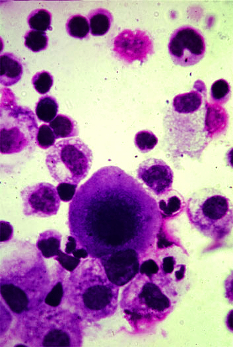Super Dots aid cell searches
 Australian researchers are making it easier to look inside cells.
Australian researchers are making it easier to look inside cells.
“Subcellular research is the new frontier in biomedical science, and nanoparticles are the new tools for super resolution imaging and drug delivery,” says Dr Fan Wang, a senior research fellow at UTS Institute for Biomedical Materials and Devices (IBMD).
“Medicine has progressed from looking at symptoms from the outside of a person, to assess their health conditions, to looking inside using endoscopes and scans.
“Now we are developing new tools to enable the inspection of the individual cells in real time. At that intracellular level you get a fundamental understanding about how cancer spreads or how a particular treatment might work,” Dr Wang says.
Dr Wang’s team is now working with a new generation of ‘Super Dot’ sensors for bio-imaging.
Super Dot nanoparticle sensors convert low-energy near-infrared photons into high-energy visible emissions, allowing scientists to peer inside cells using relatively inexpensive, standard microscopes.
In their latest study, UTS researchers have defined how many single photons are needed for the human eye to track a colour-tagged single molecule inside a living cell.
The answer is 4000 photons per 100 milliseconds under a simple microscope setup.
The study is the latest step in an ongoing project to create a volumetric imaging platform that can decode the traffic conditions and environment to build a 3D “street view” inside living cells.
“This new imaging technique is capable of monitoring, or tracking, a single optical sensor with high temporal, spectral and spatial resolution through cellular compartments,” says IBMD Director Professor Dayong Jin.
“We can measure the viscosity of the intracellular environment which means we can feel the ‘strength’ of each intracellular component and how they talk to each other.”
Interestingly, the new technique also gives colour-blind observers the ability to use fluorescence microscopes.
In the following video lecture, Dr Jin explains the growing wave of technologies that use light to detect disease.







 Print
Print